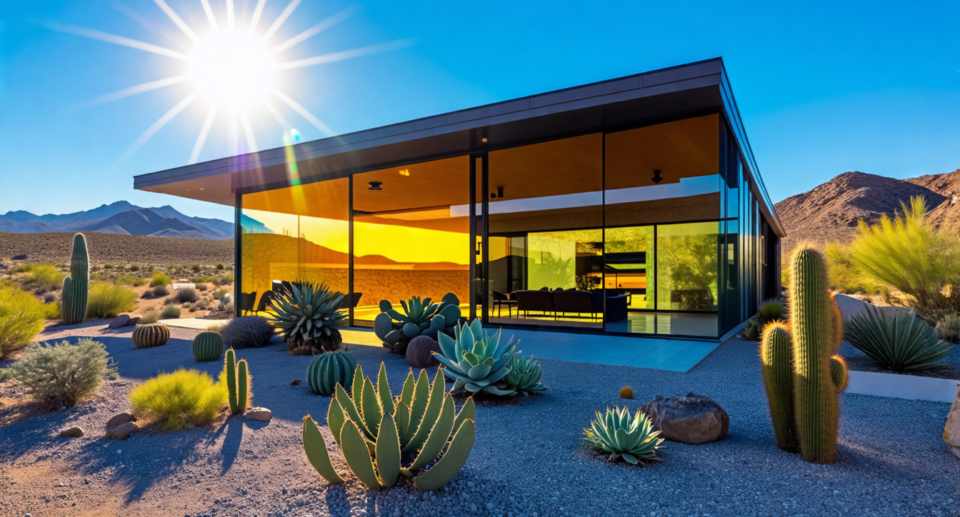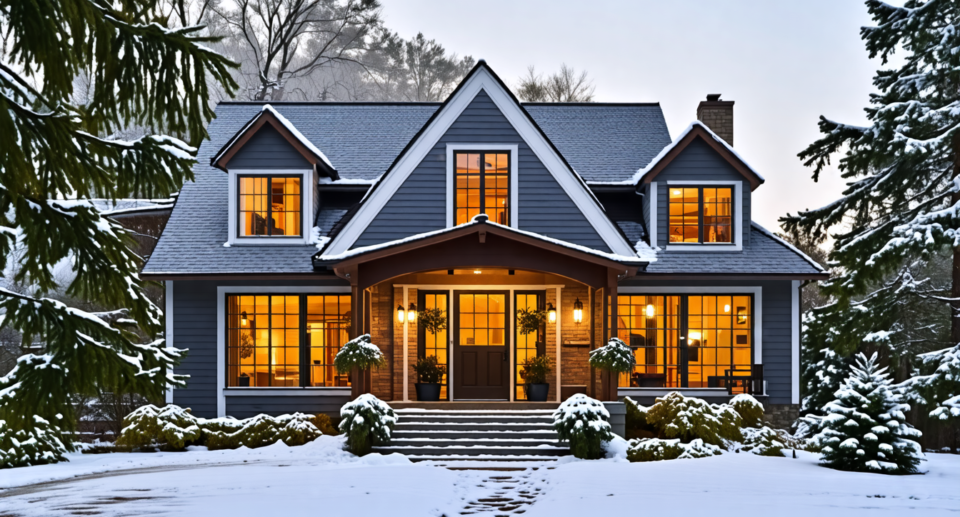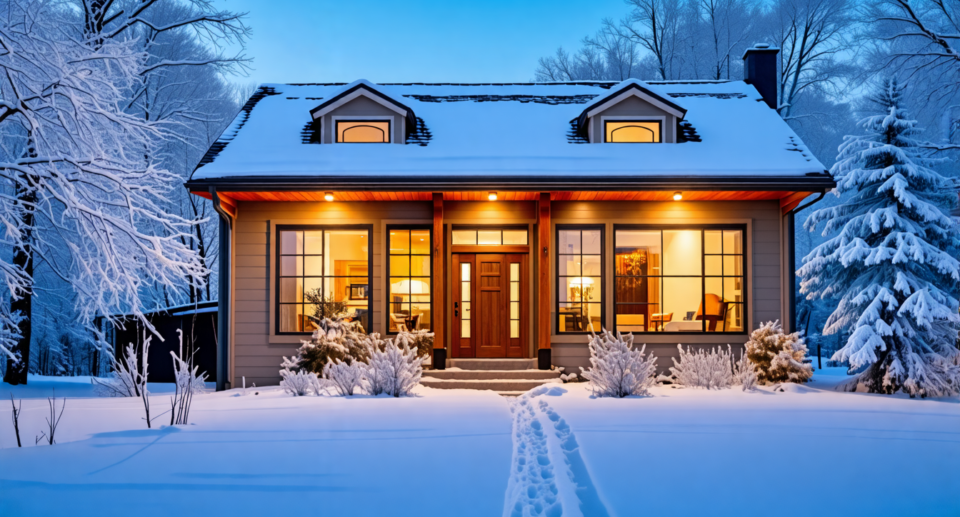Heat-Blocking Windows: Essential for Homes in Hot and Sunny Regions

In regions, with sunny weather keeping your home cool and cozy can be quite challenging and costly, at times. The installation of windows that block out heat is a solution to tackle this issue effectively.
These cutting edge windows enhance the comfort of your home. Play a role in saving energy especially in warmer regions by blocking solar heat effectively to lessen the use of air conditioning systems and decrease energy expenses significantly for homeowners.
To fully grasp the advantages of heat blocking windows. How they function effectively is essential, for your appreciation of their benefits that they bring about in your daily life at home and beyond The technologies used in these windows like Low E coatings that reduce emissivity levels double glazing for better insulation and tinted glasses engineered to reflect and absorb sunlight help, in controlling heat gain while still permitting the entry of natural light into your living space.
The integration of cutting edge technology leads to a decrease in temperatures while also improving comfort and boosting energy efficiency significantly.
Investors who opt for heat blocking windows can make an eco-friendly decision to enhance their homes in regions. These windows not create an indoor atmosphere but also contribute significantly to cutting down on energy usage and decreasing utility bills.
When we explore further into the characteristics and advantages of heat windows. Including details about their types and how to install and upkeep them. You will grasp a thorough insight into why homes, in sunny and warm areas, find them essential.
Getting Started with Heat Reduction Windows
The Significance of Heat Shielding Windows in Sunny Areas
With the ongoing increase in temperatures comes a growing necessity for cooling options, in households located in warm and sunny areas. A crucial concern these days is how to combat rising indoor temperatures effectively; an easy and highly efficient solution is the installation of windows that block out heat.
These custom windows are made to reduce the heat coming into your house from outside which helps make your living space more cozy and decreases the need for air conditioning units.
A Summary of the Advantages and Savings, on Energy
Heat resistant windows provide advantages. They notably enhance comfort by maintaining an internal temperature. This helps prevent rooms from getting too hot during the times of the day making living areas more pleasant to be.
Moreover these windows play a role in saving energy costs as they help in cutting down the reliance on air conditioning units leading to reduced electricity bills for homeowners. On a note reducing the usage of air conditioning also aids in minimizing the carbon footprint, for promoting eco friendly living practices.
Furthermore windows that block heat help shield your spaces from UV harm. Prolonged exposure, to the sun can lead to fading of furniture, floors and wall coverings over time. These custom windows block out UV rays keeping the inside of your house bright and undamaged, for a duration.
A concise overview of the functionality of heat blocking windows
The science behind heat blocking windows is truly captivating. Includes sophisticated mechanisms crafted to bounce back heat effectively while also absorbing and deflecting it away from the interior space of a building or home. One common element found in windows is the Low E coating ( for low emissivity) which consists of an ultra thin layer of metallic oxide applied onto the surface of the windowpane at a microscopic level. These specialized coatings excel at reflecting infrared rays (which play a role in heat transfer) allowing natural light to filter through effortlessly while ensuring that visibility and brightness are maintained within the space.
Double glazing is a feature in heat blocking windows where two layers of tempered or insulated panes are separated by a space filled with air or gas like argon or krypton gas to create a barrier that minimizes heat transfer, through the windowpane.
The window could have tinted or reflective films to improve its heat blocking capability making it a valuable asset, for increasing energy efficiency and comfort in residences.
Exploring the Characteristics and Varieties of Heat Absorbing Windows
Windows that block heat are created using cutting edge technologies to lessen the amount of heat entering a space and to keep temperatures pleasant while also boosting energy efficiency levels for homeowners.
In this article we delve into the technologies employed in heat windows and discuss their energy efficiency and cost effectiveness before providing advice on choosing the right option depending on local weather conditions.
Low emissivity coatings
Low E coatings consist of metallic layers that are applied to the surface of glass to reflect infrared light and decrease heat gain while still permitting visible light to pass through effortlessly. This type of glass has gained popularity as a go to option for energy windows due to its ability to notably lower cooling expenses, in hot climates. Several benefits of Low E coatings include:
- Energy Efficiency: Low E coatings have the potential to decrease energy wastage by around 30 to 50% resulting in cost savings on air conditioning expenses.
- Cost-Effectiveness: Cost efficiency is key here – even though it may seem pricier upfront compared to glass options but the long term savings on energy bills make it a worthwhile investment, with returns.
- Improved Comfort: These coatings contribute to keeping the temperature stable and improving comfort in the surroundings.
Enhanced Insulating Windows
Using glazing means having two layers of window panes with a space filled with gas in between— Argon or Krypton—to act as insulation, against heat transfer and enhance thermal efficiency significantly. Some advantages of having glazed windows are:
- Enhanced Insulation: The gas filled area between the glass panels helps to minimize the transfer of heat and maintain a temperature during the warmer months.
- Noise Reduction: Double glazing does not help to reduce noise. Also creates a peaceful indoor atmosphere by minimizing noise pollution.
- Lower Utility Bills: Save on Energy Bills, with Glazed Windows! Consistent indoor temperatures provided by glazed windows can help reduce your expenses for heating and cooling your home.
Shaded Glass
Shaded windows come with a coating or film that helps decrease the amount of heat from the sun by reflecting and absorbing sunlight rays making them quite effective in areas with strong sunlight exposure:
- Glare Reduction: Tinted windows help reduce indoors by making the space more comfortable and easing eye strain.
- UV Protection: UV protection shields, against ultraviolet (UV ) rays to safeguard furniture and interiors from fading and harm.
- Privacy: windows are commonly used to enhance privacy as they reduce visibility from the outside.
Exploring the Energy Efficiency and Cost Efficiency Relationship
In evaluating the energy efficiency and affordability of heat blocking windows options¸ it’s important to take into account factors, like the expenses¸ potential savings, on energy¸ and lasting advantages Here is a quick comparison:
| Window Type | Energy Efficiency | Cost-Effectiveness |
|---|---|---|
| Low emissivity coatings. | On top | Medium publication, to High (fast return, on investment) |
| Double glazed windows and doors offer insulation and energy efficiency. | At an elevated level. | Significant cost savings, over a period. |
| Shaded Glass | Medium | Moderate cost, with protection, against UV rays. |
Choosing the windows that block heat effectively depends on the climate of your region
Selecting the windows that block heat effectively relies heavily upon the climate and unique circumstances in your area. Here are a suggestions to guide you in making the choice:
- In places with sunny weather conditions opt for windows that have the best solar heat gain coefficient (SHGC). Low E coatings and glazed windows work well in regions.
- In regions near the coastlines it might be beneficial to opt for windows with layers of protection to endure the effects of salt and moisture, in the air.
- Living in an area where temperatures vary often means that double glazing could be the choice, for maintaining a balance, between insulation and thermal efficiency.
- In bustling city settings where noise pollution is an issue, for residents and businesses alike double pane windows offer great soundproof benefits as well as help in keeping interiors cool, by minimizing heat transfer.
- Tinted windows are great, for houses in areas, with sunlight as they can reduce glare and safeguard the interiors from UV rays while also decreasing heat from the sun.
Talking to an installer or energy expert can offer advice customized to your home’s needs and the climate where you live in particular. When you are well informed about selecting windows that block heat you’re guaranteeing that your investment brings out the best in energy conservation and improves the comfort and effectiveness of your living area overall.
Setting Up Taking Care of Windows that Block Heat.
A Detailed Walkthrough of the Installation Procedure
Putting in heat windows in your house is a move that can lead to saving a lot of energy in the long run. Start by choosing the window style based on your local weather conditions and individual requirements. Here’s a detailed guide to assist you with setting up the windows:
- Preparation: Before you begin make sure to measure the window openings to buy the right size curtains or blinds, remove any window coverings and clear the space, for smooth access.
- Remove Old Windows: Replace the windows by taking them out along, with the frame if needed and make sure the opening is clean, from any debris and old sealant.
- Install Flashing Tape: Remember to install flashing tape by wrapping it around the window opening to stop water from getting in particularly crucially, in areas with temperatures and lots of sunlight that can impact the seal.
- Install the New Window: Position the window that blocks heat in the opening and make sure it is level and straight. If necessary use shims to keep the window stable.
- Secure the Window: Make sure to secure the window by attaching it with screws or nails, as per the manufacturer’s guidelines and be cautious not to tighten as it could potentially distort the frame.
- Seal the Perimeter: Ensure the perimeter is sealed by using outdoor grade caulk, around the window edges to form a weather seal; inside the house fill any spaces between the window and the framework, with spray foam insulation.
- Final Adjustments: Make sure to reinstall all the trim that was taken off and double check that the windows can open and close, without any issues.
Dealing with Hurdles and Fixes Throughout Setup
When it comes to putting in heat windows at home so they block out the sun effectively. Keep your interiors cool, during summer months or warm, during winter seasons. While it’s a project for homeowners to put in the effort and plan ahead properly. Like with any home improvement task there are often hurdles that could come up along the way:
- Improper Measurements: Proper Measurements Matter a Lot! It’s important to ensure measurements when it comes to your windows fitting accuracy; if you notice any discrepancies in issues with your windows don’t hesitate to seek advice from a skilled window installer, for precise adjustments and solutions.
- Sealing Gaps Tip: Prevent air. Optimize the efficiency of your windows by sealing any gaps with top notch caulk and insulation materials to ensure a tight seal throughout.
- Dealing with Existing Damage: When you take out windows you might find some damage to the structure, around them too like rot or other issues that need fixing before putting in windows to keep everything strong and solid.
Tips, for Ensuring Longevity and Optimal Performance, through Recommended Maintenance Practices
After installing heat blocking windows in your home or office space it is essential to ensure maintenance to uphold their effectiveness and prolong their durability:
- Regular Cleaning: Remember to keep your windows clean by washing the glass and frames with a soap and water solution, on the basis of avoiding harsh cleaners that might harm any coatings or tints, on the glass.
- Inspections: Remember to check your windows for any wear and tear like cracks or broken seals or even condensation, between the panes. If you notice any problems be sure to fix them to keep your energy bills low and your home cozy.
- Lubrication: Don’t forget to keep the window tracks and moving parts lubricated to guarantee they operate smoothly; opt for a silicone based lubricant since it doesn’t draw in dust and dirt.
- Weatherstripping: Make sure to inspect and change the weatherstripping, around your windows if you notice any wear or damage to keep a seal, against air leaks.
- Protective Film: Be careful, with the film on your windows, by following the guidelines provided by the manufacturer to maintain its quality and avoiding chemicals that may damage it.
Exploring the Financial Impact and Long Term ROI
Opt for heat windows may require an investment initially. However the savings and advantages, in the run make it worth the costs:
- Initial Costs: The price of windows that block heat can differ depending on the technology used and the brand as the installation needs are involved in the process. Choices such as Low E coatings, double glazing and tinted glasses will come with varying costs.
- Energy Savings: One of the benefits of energy savings is cutting down on electricity expenses by enhancing efficiency with windows that block heat effectively and reduce the reliance on air conditioning, in hot and sunny areas.
- Enhanced Property Worthiness: Energy saving windows can boost the value of your home as potential buyers tend to seek residences, with up to date and efficient amenities that make your property more appealing, in the market.
- Maintenance Costs: Keeping up with maintenance expenses is affordable, with care and attention needed for tasks like weatherstripping replacement or sealant reapplication. Costs that pale in comparison, to the long term benefits of saving money overall.
- Return on Investment (ROI): Over a period of time economy wise aspect wise savings realized from reduced energy expenditure combined with the enhanced value of the residence makes certain a return on investment (ROI). The majority of homeowners observe that the financial benefits gained from upgrading windows typically cover the cost within a year.
In summary—although the upfront cost of installing heat blocking windows may seem significant at first glance—the potential for energy savings along with minimal upkeep expenses and a boost in property value provide an incentive for residents residing in sunny areas to consider this upgrade.

Hello, I’m Keith Jones. I’m the author and head of content here of door and window guide. I’ve been in the window and door industry for over 10 years in the UK and North America. I’ve had quite a few roles during my career mainly in Worldwide sales. I’m now semi retired so I thought I’d put my knowledge to good use educating people about all they might need to know about door and window related topics.







